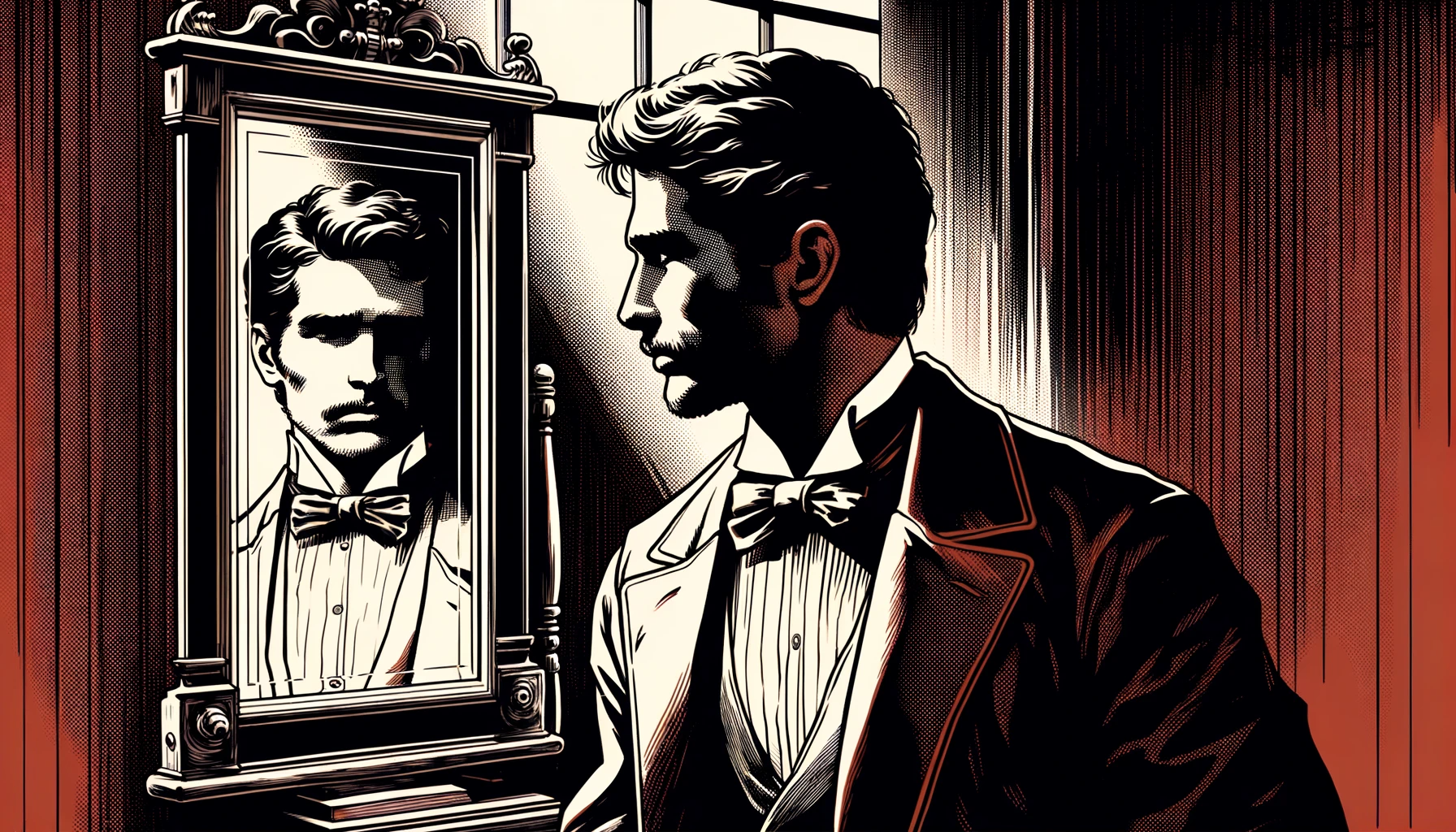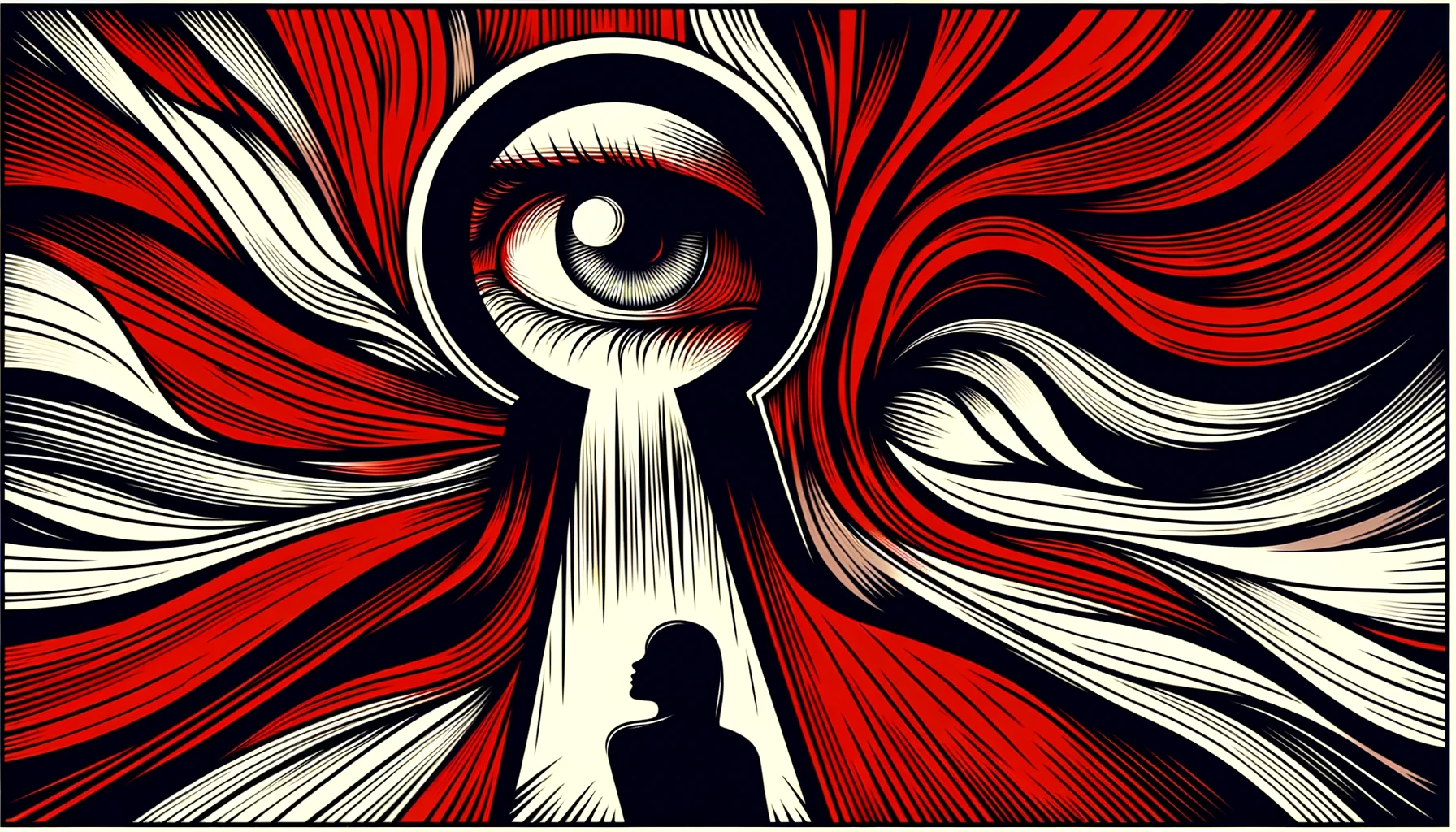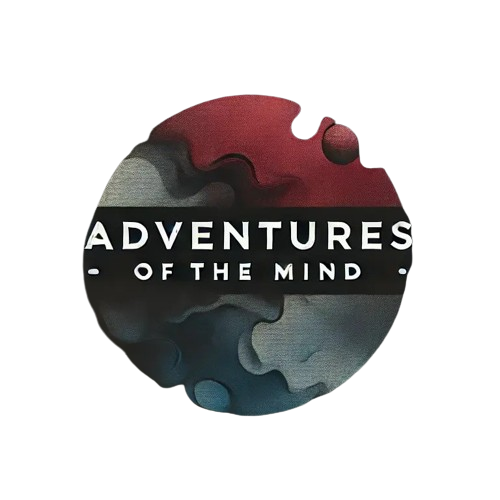The Hidden Influence of Self-Image
Published by Ben Worrall 31st January 2024

In my previous article, I discussed how increasing awareness is vital for personal change. This time we’re going to take that idea one step further and explore the impact our self-image has on the way we relate to life. By becoming aware of the hidden interpretations we’re making about ourselves, we’re able to challenge our thinking and make changes to the ways we behave.
The Man and The Mirror
A gentleman is preparing to attend a dinner party. He approaches the bathroom mirror and gazes at his reflection. His nose hangs down over his moustache like a rusty hook. His skin is frail and scarred. He notices every marking, every imperfection. His hair is receding and thinning. Most disturbing is his oversized forehead, which looks like it could belong to an extraterrestrial being.
How can he possibly attend the party looking like this?
There will be important people there. Some he has never met before. Others he hasn’t seen in years. He will be the night’s entertainment—the joke on everyone’s lips.
A heavy anxiety begins to build in his chest. He retreats into the pull of his imagination, dancing with images of himself as a flawed individual.
The gentleman’s imagined physical faults will not remain harmless. They will manifest throughout his life, seeping into his daily activities, influencing his decisions, and constraining his interactions with others.
The dinner party will play out as he expects. Not because there is anything wrong with him, or because the other guests at the party will care about his appearance, but because his negative self-image will affect his behaviour and perceptions.
This example illustrates the sneaky impact self-image can have on your life. Like the man in the mirror, many of us are influenced by the hang-ups we have about our appearance. But appearance is not the issue. It’s the beliefs we hold about our appearance that are responsible for all the nasty side effects.
The same principle applies to every idea we hold about ourselves. These ideas form a sticky web of beliefs that make up our self-image — a powerful force which provides us with a sense of identity as we move through life.
Who Do You Believe You Are?
Bring up a picture of yourself in your mind right now.
What do you see?
What are the immediate thoughts that arise?
What feelings accompany them?
The answers to these questions form your self-image.
Notice how these ideas, thoughts, and images have no solid grounding. Nothing concrete that confirms the conceptual self has any reality to it whatsoever. It’s mental imagery. It’s a mind game.
In truth, you’re creating and recreating yourself all the time—a creation reinforced by the various beliefs you have accepted as true throughout your life.
Becoming aware of your self-image opens up the door for core-level identity change. The clearer you see how you’re placing artificial limits on who you are, the greater your ability to shift your sense of self in a new direction which aligns with the person you want to be.
The Accumulation of Personal Beliefs
Becoming familiar with your beliefs is fundamental as they have a powerful influence on your life. They dictate what you consider right or wrong, true or false, possible or impossible. They motivate your thoughts and actions. They are responsible for creating your entire sense of reality.
The task is to build up a sense of how certain beliefs have been taken on as truths, and have eventually congealed to form your self-image.
Here’s an exercise:
Close your eyes and imagine yourself looking at your reflection in a mirror.
Pinpoint any belief that jumps out at you immediately. These could be beliefs about your appearance, or more importantly, who you are.
Pay specific attention to beliefs that feel accurate, but also have an emotional charge — positive or negative.
Make a note of what comes up. Spend at least 10 minutes doing this. Becoming familiar with your beliefs is time well spent.
Here are some examples of common beliefs that could come up:
I’m an intelligent person/or not.
I’m worth less than other people.
I’m attractive/unattractive.
I’m important or special.
I don’t fit in.
I fail at everything I try.
I’m a good/bad person.
Once you have some of your beliefs written down, read back through the list, and seriously question these assumed truths about yourself. Be open to the possibility that they may not be as accurate as you think.
Can you remember where the belief came from?
Do you recall what evidence it was based upon?
If not, why are you still holding onto it?
If past evidence seems to support the belief, question if it’s still relevant to your life now. We often take on beliefs during traumatic moments of our younger years, and never let them go again. They remain part of our self-image even if the conditions that formed the beliefs are no longer true.
Can you accept that you don’t know whether many of these beliefs are accurate? You think they are, but you’re basing this on an identity constructed with faulty parts. A tower which relies on its earliest bricks to keep the entire structure stable. Developing a flexible view is a major first step in working with your self-image.
The Birth of Beliefs
Beliefs about ourselves have usually arisen in one of two ways:
First, from formative experiences. These could be large, emotionally charged incidents, or small but repeated incidents that have gathered momentum over time. An example of the first would be a traumatic experience where you felt your physical safety or your sense of identity was threatened. An example of the latter would be a series of perceived successes or failures that resulted in a change in self-confidence.
Second, through family or culture. As we grow up, we soak in ideas from our surroundings and then use these as benchmarks to navigate the world. They make up our moral lines. If we perceive ourselves to have failed to live up to them, we create negative beliefs about ourselves.
Investigate these sources to identify the origins of your beliefs. Put aside at least an hour to voyage into your past. You might be surprised by what comes up. Revelations about yourself may emerge. Insights into your current self-image should become clearer.
The problem with beliefs is they have been absorbed unconsciously. A self-image has formed without our knowledge. To us, it appears as a self-evident reflection of who we are, not an artificial filter tainting our perception. The fact that the self-image lingers outside of awareness only increases its influence.
Most of us are the puppets of our own beliefs, dragged around by the ghosts of our past, made to dance to the tune of forces we never agreed to let into our lives. The exhaustion sets in as we continue a performance that no longer serves us, clueless that we even have the option to stop. We’re not just unaware of how to remove our strings; we don’t even realize we’re attached to them.
Social Reinforcement of the Self-Image
Let’s return to the example of the man in the mirror, but imagine that the dreaded mirror is present everywhere he goes. He sees his image reflected in every environment, situation, and person he encounters.
You and your environment are intertwined, creating a fantasy world where each party relies on the other to keep the illusion consistent.
If you believe yourself to be a certain way, you’re likely to act out those beliefs, and others will view you that way too. Before you know it, your identity has been crystalized in the eyes of the world.
To act out of character takes more courage than you’d think. By doing so you’re breaking away from your assigned role and exposing yourself to the danger of being outcast from the tribe. Risking this outcome takes an emotional toll on the human mind. You rely on your environment to reinforce who you are and your environment relies on you to continue operating smoothly. Going against your proven survival strategy threatens your very existence.
“How people see themselves is greatly affected by how other people see them and they will modify their behaviour based on feedback from external sources. We acquire an identity. This can often become self-fulfilling, a behaviour is reinforced by other people and then the behaviour becomes a pattern in the personality.” — Steve Bruce, Sociology: A Very Short Introduction.
Have you noticed how you behave differently depending on the situation? Much of this behaviour modification is based on the expectations that a specific environment has placed on you. The rules for each situation are wired into the social circuitry. You take on the role of wild monkey man when you meet up with your friends from college, but the stoic genius when starting a new job.
These roles don’t feel like a choice. Your overarching self-image stays mainly consistent, but if you are to maintain the status quo, a certain level of performance is required. The combination of internal and external pressure is why changing your self-image is so difficult. You’re frozen in place by the assumptions and expectations of those around you, alongside your web of beliefs.
Stop thinking of yourself as an individual with complete autonomy over who you are on a given day. Instead, consider yourself a complex system interacting with other systems in your environment.
How Self-Image Shapes Your Life
Your self-image will dictate whether you are successful in achieving your dreams. It’s the cause of many of your fears and insecurities. It plays a huge role in decision-making and could be the difference between a series of choices which lead you down a path towards fulfilment or destruction. It plays a major role in your interactions with others, your choice of partner, your self-esteem, and ultimately the success of any relationship you find yourself in. It affects your health and has the potential to produce negative somatic symptoms.
You may not always be aware of your self-image, but you shield it like a mother would her child. Any threat to it is a threat to you. You’re protective of it because it’s what you conceive yourself to be. You’ve taken on this image as your identity.
Think back to the last time you remember being hurt or offended. These feelings were likely in response to a threat to your self-image. It’s vulnerable to attack and leaves you playing on the defensive.
To take control of your self-image is to take control of the infinite possibilities you have been blessed with. It provides you with the ability to leave the past where it belongs and the freedom to choose your highest possible future. That’s what I want for myself, and that’s what I want for you.
In the next essay, we will continue to dive deeper into self-image. I’ll discuss the insights and tools you need to modify your self-image. Also, I want to open the door to the possibility of separating your sense of identity from your self-image.
The goal is to maintain a healthy self-image, while also being able to take a step back and view it objectively, becoming less wrapped up in the hypnotic power that your beliefs, ideas, and images currently have over you.
Ben Worrall
Continue to Part Two: Transforming Your Self-Image





